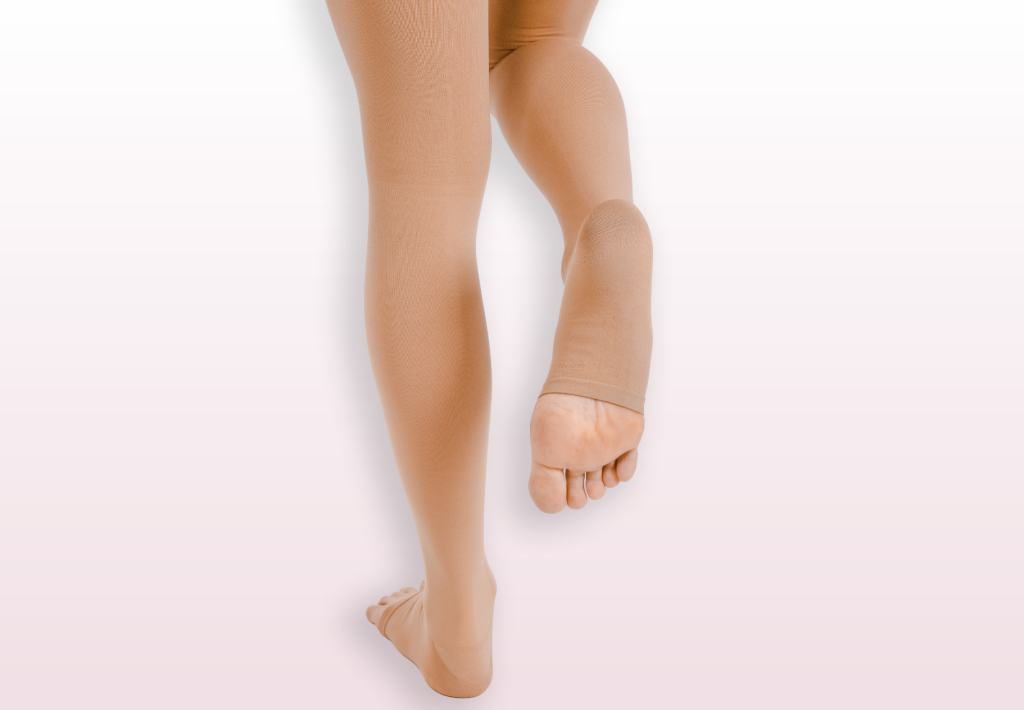
Compression stockings, particularly thigh high compression socks, have become a hot topic in the world of health and wellness. These versatile garments are designed to improve blood circulation in the legs, prevent varicose veins, reduce swelling, and enhance overall leg comfort. In this comprehensive guide, we will delve into the world of thigh high compression socks, exploring their benefits, the various types available, and how to choose the perfect pair to suit your needs.
Thigh high compression socks offer a multitude of health benefits that cater to individuals from all walks of life. Let’s take a closer look at some of the key advantages they provide:
One of the primary functions of thigh high compression socks is to enhance blood circulation in the lower extremities. The graduated compression design exerts more pressure near the ankle and gradually decreases as it moves up the leg. This helps to push the blood upward, against the force of gravity, reducing the risk of blood pooling and the formation of blood clots.
Varicose veins, those twisted, enlarged veins that often appear in the legs, can be painful and unsightly. Thigh high compression socks are a preventive measure, as they support the veins, reduce the pressure on them, and minimize the risk of developing varicose veins.
Whether you’re on your feet all day, traveling, or experiencing pregnancy-related swelling, thigh high compression socks can help reduce edema. By facilitating the removal of excess fluid from the tissues, these socks provide relief and comfort.
Thigh high compression socks are not limited to medical use; they also benefit athletes. They can help reduce muscle fatigue, increase endurance, and speed up recovery by providing better oxygen and nutrient delivery to the muscles.
Thigh high compression socks come in two primary types: graduated compression and uniform compression. Graduated compression exerts the greatest pressure at the ankle and gradually decreases as it goes up the leg. This design is ideal for medical purposes, enhancing blood flow. Uniform compression, on the other hand, provides equal pressure throughout the leg and is often used in fashion or for mild leg support.
Compression stockings are available in various pressure levels, typically measured in millimeters of mercury (mmHg). The choice of compression level depends on your specific needs and should be discussed with a healthcare professional. Common levels include 15-20 mmHg for mild compression, 20-30 mmHg for moderate compression, and 30-40 mmHg for firm compression.
Thigh high compression socks are crafted from various materials, including nylon, spandex, and other blends. Some are more breathable and moisture-wicking, making them suitable for active individuals, while others are smoother and more suitable for formal occasions.
Compression stockings come with both open-toe and closed-toe options. Open-toe socks are ideal for those who prefer to wear sandals or have sensitive toe areas, while closed-toe socks offer complete coverage and warmth.
Selecting the right pair of thigh high compression socks is crucial to enjoy the maximum benefits. Here’s a step-by-step guide on how to choose the perfect pair:
Before making a decision, it’s essential to consult with a healthcare provider, particularly if you have a medical condition that requires compression therapy. They can provide guidance on the appropriate compression level and type of stocking.
Accurate measurements are key to finding the right fit. Measure the circumference of your ankle, calf, and thigh, as well as the length from your heel to your upper thigh. Many brands offer sizing charts to help you find the perfect match.
Think about when and where you plan to wear your thigh high compression socks. If it’s for everyday use, choose a comfortable, breathable material. For athletic purposes, opt for socks with moisture-wicking properties.
Thigh high compression socks are available in a variety of colors, patterns, and styles. Choose a design that complements your wardrobe or one that you feel confident wearing.
If possible, try on a few pairs to ensure the perfect fit and comfort. Many retailers offer sizing guides and return policies that make it easier to find the right socks for your needs.
Thigh high compression socks are more than just a medical necessity; they’re a versatile accessory that can benefit a wide range of individuals. Whether you need them for health reasons, athletic performance, or simply for comfort during long flights, the key to maximizing their benefits lies in choosing the right pair. With various types, materials, and styles available, there’s a perfect pair of thigh high compression socks waiting for you. So, consult a healthcare professional, measure your legs accurately, and embark on a journey to improved leg health, comfort, and style with the power of compression stockings.